Subscriber Benefit
As a subscriber you can listen to articles at work, in the car, or while you work out. Subscribe NowWhat makes a building architecturally significant—and which buildings in Indianapolis fit that bill?
Those are the questions a small group of experts associated with the
Institute of Architects Indianapolis sat down to answer in early November.
During a 1-1/2-hour discussion, six designers debated the merits of dozens of local structures built after World War II, in hopes of determining which were the most highly regarded in the city.
The exercise was conducted with hopes of sparking conversation among architects and the general public about Indianapolis’ most prominent buildings, said Brandon Farley, president of the AIA Indianapolis executive committee.
“This was really driven by the idea that we could start a conversation,” Farley said. “I think if we’re driving more conversations about the incredible buildings we have in our city, we’re doing something great for the architectural community.”
The panel featured several local AIA executive committee members, along with a few industry professionals—all of whom have their own understanding of what makes a building architecturally significant.
“We had a really well-rounded group involved in this—people who really know their stuff,” Farley said. “But we were all coming at it from a different perspective and different ideas of what makes a building unique and important.”
The list, he said, certainly isn’t intended to be comprehensive and was compiled without putting the picks in a specific order. Farley said he expects some people to disagree with some of the panel’s selections.
After all, not all the selections were unanimous, and Farley said he opposed a couple—The Pyramids on the northwest side, in particular—but advocacy from other members led to their inclusion.
He said while The Pyramids are prominent, he doesn’t consider them to be the most technically perfect buildings the city has to offer. Other panelists expressed similar views on other properties that made the cut, such as Victory Field and the Ruth Lilly Visitors Pavilion.
Aside from the final selections, the panel considered buildings like Eskenazi Hospital and the Community Justice Campus, although Farley said the panel ultimately determined the justice campus needed to be fully operational before including it on the list.
“If we made the same list a few years from now, I think we’d almost certainly need to include it in the discussion,” he said.
Here’s the list, in alphabetical order:
Christian Theological Seminary
Address: 1000 W. 42nd St.
Opened: 1966
Architect: Edward Larrabee Barnes
From a panelist: “Sweeney Chapel at CTS is not a huge building by any means, but it is so well done,” said Patrick Kestner, owner of Still Architecture in Indianapolis and vice president of AIA Indianapolis. “When you are in that space and when the light comes around through that stained glass, it’s just a beautiful example of how a chapel could be done.”
Details: The original Sweeney Chapel is a simple, geometric structure that blends into the woods and is the result of a change in plans after accomplished designer Eero Saarinen withdrew due to other commitments.
Clowes Memorial Hall
Address: 4602 Sunset Ave.
Opened: 1963
Architect: Woollen Molzan Partners and John M. Johansen.
From a panelist: “That was the very beginning of Evans Woollen’s work in Indianapolis; it is certainly indicative of that style of iconic brutalism. I’d take Clowes every day,” said Olon Dotson, professor and interim department chair at Ball State University College of Architecture and Planning.
Details: The sole representation of brutalist architecture on the list, Clowes was an anomaly when it opened. However, that design style took hold in the city, with several prominent downtown buildings—like the Minton–Capehart Federal Building and Barton Tower, both also designed by Woollen Molzan—following suit in the years that followed.
Col. H. Weir Cook Terminal at Indianapolis International Airport
Address: 7800 Col. H. Weir Cook Memorial Drive
Opened: 2008
Architects: HOK and AeroDesign—which was a joint venture of eight local firms, including CSO Architects
From a panelist: “The airport embodies the definition of great architecture. It’s thoughtfully designed, efficient and functional. Not to mention beautiful,” said Brandon Farley, architect at StructurePoint and president of AIA Indianapolis
Details: The terminal includes extensive public art, although many panelists lamented that many of the original works have been replaced by advertisements over the years. Even so, the property was a unanimous pick.
Cummins Global Distribution Headquarters
Address: 301 E. Market St.
Opened: 2017
Architects: Deborah Berke Partners and Ratio
From a panelist: “I really like Cummins tower. To me, it’s a good example of the new paradigm for office buildings,” Farley said. “It’s definitely a more interesting, more thoughtful take on an urban office building. They could have easily made that a two-story building spanning the entire city block and be done, but they didn’t, right? They stacked the area up along the perimeter. They preserved the urban edge, made some interesting site choices.”
Details: Cummins’ headquarters is the newest building on the AIA’s list and sits atop the former site of Market Square Arena, which was demolished in 2001.
Eiteljorg Museum of American Indians and Western Art
Address: 500 W. Washington St.
Opened: 1989
Architect: Jonathan Hess
From a panelist: “The Eiteljorg is a significant, great piece of design,” Kestner said. “The exterior is reflective of its interior and reflective of its mission. It’s a cool building.”
Details: Hess took inspiration from travels throughout the Southwest with museum founder Harrison Eiteljorg, studying the land, architecture and people.
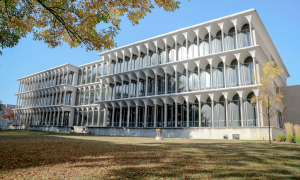
Irwin Library at Butler University
Address: 4600 Sunset Ave.
Opened: 1963
Architect: Minoru Yamasaki
From a panelist: “Its clean, mid-century-modern terrazzo interior is very open,” Dotson said. “It’s known for these little arched openings repeated over and over again. [Yamasaki] was known for this, even on the World Trade Center. … It was radical for the time.”
Details: Irwin Library was designed with 21 shades of white by Yamasaki, a prominent 20th century architect who also designed the original World Trade Center.
NCAA Hall of Champions and addition
Location: White River State Park
Opened: 2000, renovations/addition completed in 2009 following a 2007 electrical fire
Architects: Original: Michael Graves, in partnership with Schmidt Associates. Renovations/addition: Ratio and Jack Rouse Associates
From a panelist: “If you look at the Hall of Champions and you take that and set it somewhere else, it still stands out,” Kestner said. “If you take the addition and put it in suburban Chicago, it blends in. I think it’s a good piece of architecture … [but] I would have a hard time putting the addition on and not the original building.”
Details: While some, like Farley, advocated for including only the addition on the list, others were adamant the entire building be included.
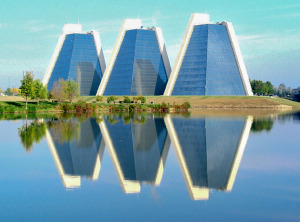
The Pyramids
Address: 300 Depauw Blvd.
Opened: 1972
Architects: Kevin Roche and John Dinkeloo
From a panelist: “I discovered The Pyramids when I was on top of what used to be Indiana National Bank building, and I looked northwest and it almost blinded me,” Dotson said. “I think they are interesting. Someone took a chance. The Pyramids generate discussion and debate.”
Details: Originally, The Pyramids were expected to be part of a nine-building office park, but with little uptake on space in the first three, the remainder of the project was scrapped.
Ruth Lilly Visitors Pavilion in Newfields’ Virginia B. Fairbanks Art & Nature Park
Address: 4000 Michigan Road
Opened: 2010
Architect: Marlon Blackwell
From a panelist: “I proposed to my wife on the porch of that building. I love that building,” Farley said. “But it’s kind of a ridiculous building. It’s a multimillion-dollar pavilion in the woods. It contains bathrooms and a sitting room. You can watch the birds, I guess. … It’s beautiful as art, but great architecture serves a function and has a purpose.”
Details: The pavilion is considered by panelists to be one of the most beautiful buildings in Indianapolis, but some stopped short of calling it strong architecture. Even so, the visitors center has received national acclaim, including the top design award from the national American Institute of Architects.
Victory Field
Address: 501 W. Maryland St.
Opened: 1996
Architects: HOK Sport and Browning Day Mullins Dierdorf
From a panelist: “It’s extremely well done. It’s a great venue,” said Sanford Garner, a former AIA Indianapolis president who owns RG Collaborative.
Details: Home of the Indianapolis Indians, Victory Field has played a major role in revitalizing downtown and giving people a reason to spend time in the corridor on summer evenings. Some panelists argued the venue is the nicest minor league baseball stadium in the country.•
—
Correction: The address of the Cummins Global Distribution Headquarters—301 E. Market St.—has been corrected in this story. Click here to see all of IBJ’s corrections and clarifications.
Please enable JavaScript to view this content.

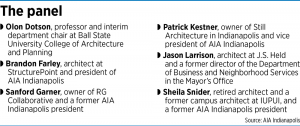
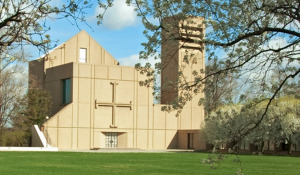
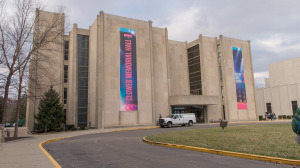

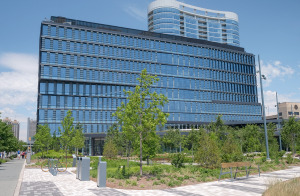
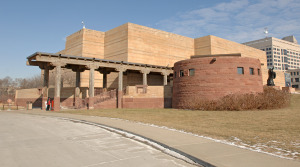



Typo: the Cummins building is 301 E. Market, not 251 N. Illinois.
Thank you for pointing out that mistake. We have fixed it!
At $95m, the Cummins DBU HQ is def the most expensive for an office building.
I believe John M. Johansen collaborated with Evans Woollen on Clowes Hall.
Some have said he was the lead designer.
Thank God they didn’t list the Minton-Capehart Federal building. I dislike brutalism in the 1st place and that thing drives me nuts. I wish some great architect would dream up a true remodeling that would make it into something worth looking at.
Great list! The pavilion at the Art & Nature Park truly is Indianapolis’ most beautiful building. It’s a gem. Also, the Cummins new downtown headquarters is without a doubt the best new commercial building in Indy.
I’m very thankful that the brutalist monstrosity that is the Federal Building didn’t make the list.
The Barton Tower in downtown Indy, formerly a Brutalist masterpiece surrounded by green space, could have been a contender. But the city gave away the green space around it to a developer, and Ratio Architects designed an atrocity called Millikan on Mass, and the century’s greatest crime against Indy architecture (so far) is now wrapped around a once-grand building. It’s OK, though, since the only folks affected are “those people” in the low-income housing, which now sits in a dark canyon.
Brutalism aside, if you asked a different group of architects, I am certain that you would get a much different list of 10 buildings. Some of the great commercial buildings of the downtown area were definitely missed in favor of these stand alone structures.
Wondrous structures are nice. Yet architecture should more carefully consider site and area context, i.e. “Design with Nature”, and push back against clients” profit-seeking over-reach, especially in city-designated Environmentally Sensitive Areas where, per a recent DMD map, significant development encroachment is evident. Recent example is in Broad RIpple where the MDC voted approval for 8 condos crammed onto the small White River-fronting site and encroaching into the ordinance’s requirements for the Stream Protection Corridor. Adding insult to injury, the MDC chairman actually mocked the expressed concern from another Commissioner about the desirability of holding the line on compliance with the ordinance. This was also a poor way to implement the White River Vision Plan, if we’re actually serious about preserving our remaining natural heritage along the corridor and enhancing livability.
No Scottish Rite Cathedral? This list is hogwash…
+1